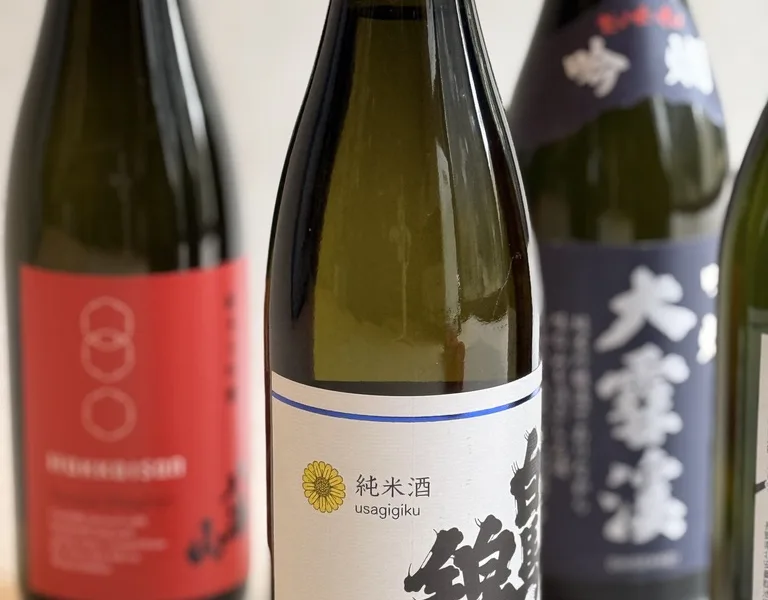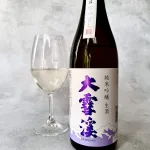What is sake? Basic knowledge of Japanese sake before you drink would help you to enhance you sake moments.
What Is Sake?
Sake is a traditional Japanese alcoholic beverage made from rice, rice malt (koji), and water. It is brewed through a fermentation and filtration process and typically contains less than 22% alcohol.
More Than Just a Drink
In Japan, sake is more than just a drink—it is a part of daily life and deeply woven into traditional events and rituals. Since ancient times, meals were considered sacred in Japan. People offered food and drink to the gods and then shared them equally among everyone. Sake, made from rice—the staple of the Japanese diet—was no exception. It was offered to the gods to pray for a good harvest and then shared among the people.
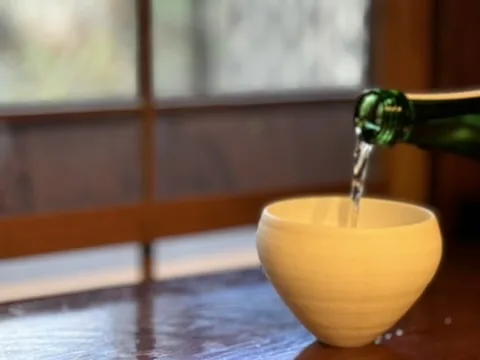
Sake in Shinto and Festivals
Even today, sake is often offered at shrines during festivals and ceremonies. The rows of large sake barrels seen on shrine grounds are not for drinking—they are offerings made to the deities. This practice reflects the spiritual connection between sake and traditional Japanese beliefs.
Sake at Home Altars
In many homes, small household altars are still common. People offer sake and tea every morning, praying for good health and family safety before starting the day. This custom shows how deeply sake is rooted in Japanese culture—not just as a drink but as a symbol of gratitude, tradition, and connection.
Sake and Japanese Food Culture
This tradition of honoring food and sake has shaped Japanese cuisine. Sake, made from rice, has incredible versatility and pairs well with various dishes—not only Japanese but also international cuisines.
One reason is its flexibility in serving temperatures. Sake can be enjoyed chilled or warmed, and its flavor and aroma shift depending on the temperature. For example, a cold sake pairs wonderfully with a refreshing Italian tomato and cucumber salad, while a warm sake complements the bold, spicy flavors of Chinese-style mapo tofu.
Sake cups also come in many forms—from traditional ochoko, sake cups, to modern wine glasses—allowing people to enjoy it in a way that suits the dish, the mood, or the season.
How Is Sake Made?
Sake is brewed through a fermentation process, but unlike wine, it starts with rice, which contains starch—not sugar. Here’s how sake is made and why it’s such a unique beverage.
A Two-Step Fermentation Process
While wine is made by fermenting the natural sugars in grapes, sake requires an extra step. Koji mold is first used to convert the starch in rice into sugar. Then, yeast ferments that sugar into alcohol. This simultaneous saccharification and fermentation takes place in the same tank, making the process more complex—more similar to beer brewing, but with its own distinct techniques.
Crafted by Hand in Small Breweries
Although Japan has some large-scale sake producers, most sake is still made by small, local breweries. Many of them rely heavily on manual craftsmanship, with minimal use of machinery. Modern equipment is improving the process, but it remains expensive, so many brewers continue using traditional, time-tested methods.
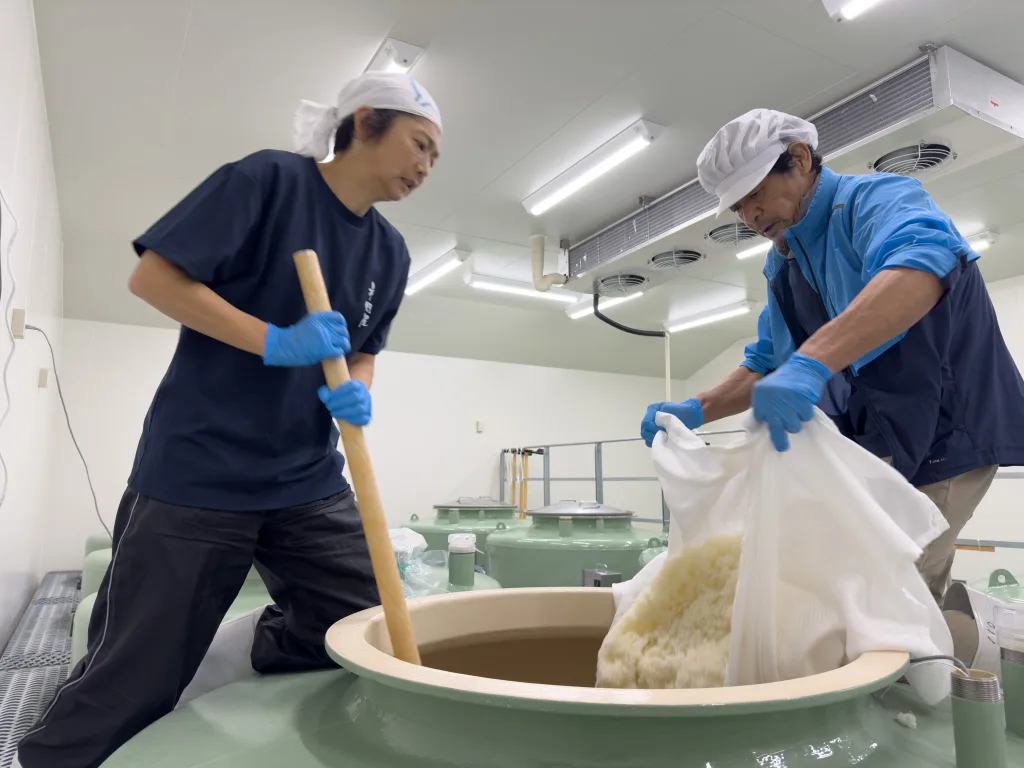
The Delicate Art of Koji Making
One of the most important steps in sake brewing is cultivating koji. This is a delicate process that requires careful temperature and humidity control, often done by hand. Brewers use their senses—especially touch—to monitor how the koji is developing on the rice surface. This is where the artisan’s experience truly shines.
Sake Is Brewed in Winter
Sake brewing usually takes place in the cold winter months. This is for two reasons: the use of freshly harvested rice, and the fact that cold weather helps prevent bacterial contamination. Brewing starts early in the morning using icy water and steamed rice. Even today, much of the process—koji making, mixing, and fermenting—is done by hand in the chilly conditions of the brewery.
Types of Sake
Sake can be categorized based on how much the rice is polished and whether distilled alcohol is added during brewing. These factors significantly influence its flavor, aroma, and overall character.
Classification by Rice Polishing Ratio (Seimaibuai)
The rice polishing ratio refers to how much of the outer layer of each rice grain is milled away before brewing. The more polished the rice, the more refined and delicate the sake tends to be.
Premium types such as Daiginjo and Junmai Ginjo are made with highly polished rice. These sakes often have elegant aromas and a clean, light finish, making them popular among those new to sake as well as seasoned enthusiasts.
Classification by Alcohol Addition
Another key distinction is whether distilled alcohol is added during brewing.
Junmai sakes are made with only rice, water, and koji—without added alcohol. They typically have a rich, full-bodied flavor and pronounced umami.
In contrast, types like Honjozo and Ginjo include a small amount of added alcohol during the final stages of brewing. This enhances the aroma and results in a lighter, smoother taste.
Unique and Specialty Sake Styles
Beyond the major categories, there are unique types of sake that offer distinctive textures and flavor profiles:
- Nigori (Cloudy Sake): Coarsely filtered, leaving fine rice particles that create a creamy texture and often a slightly sweet flavor.
- Namazake (Unpasteurized Sake): Fresh and lively in taste, with a fruity aroma. It must be refrigerated due to the lack of pasteurization.
- Koshu (Aged Sake): Matured over several years, developing complex flavors that may include notes of nuts, dried fruits, or spices.
These varieties show the incredible diversity of sake and how it can appeal to many different palates and occasions.
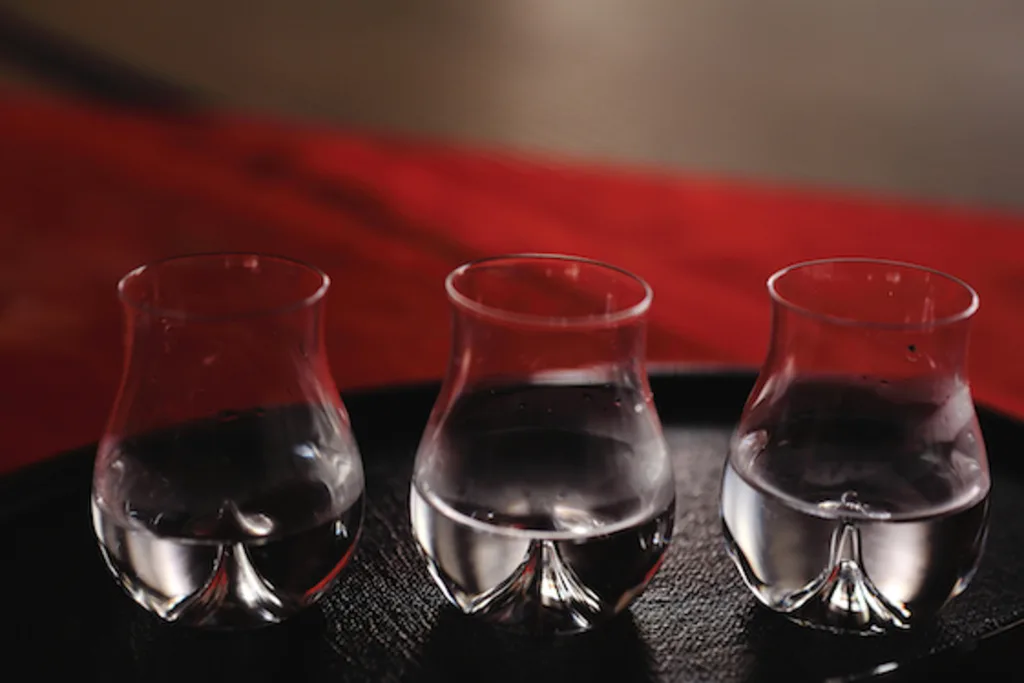
What does Sake taste like?
Sake has a unique taste that can be hard to imagine if you’ve never tried it before. To help understand it, it’s useful to compare it to wine, a beverage more familiar to people around the world.
A Flavor Rooted in Rice
Sake is made from rice, koji (a fermentation mold), and water—very different from wine, which is made from grapes. Because rice has a natural sweetness and umami, sake tends to have a smooth, slightly sweet taste, often without the sharp acidity found in wine.
“Dry” and “Sweet” in Sake vs. Wine
Both sake and wine use terms like “dry” and “sweet,” but they don’t mean the same thing.
- In wine, “dry” often refers to a lack of sugar and a tannic, astringent finish.
- In sake, “dry” means less sweetness, but the flavor includes umami, mild acidity, and clean sharpness—without the tannins that give wine its drying sensation.
This difference means that even “dry” sake often feels smoother and rounder than dry wine.
Taste Depends on Ingredients and Method
Like wine or beer, the flavor of sake varies depending on the ingredients and how it’s made. Sake is classified into types like Junmai-shu, Ginjo, and Daiginjo, which indicate how the sake is brewed and what it’s made from. These classifications can give you a general idea of the flavor—whether it’s rich and earthy, light and floral, or somewhere in between.
How much alcohol is in Sake?
Sake and wine, both being brewed alcoholic beverages, generally have moderate alcohol content. Sake typically has an alcohol content of 15-16%, though it can go up to around 22%. In comparison, wine usually ranges from 10-14%. As you know, spirits like whiskey and vodka, distilled liquor, have much higher alcohol content.
Want to know more about sake? Join the tour!
